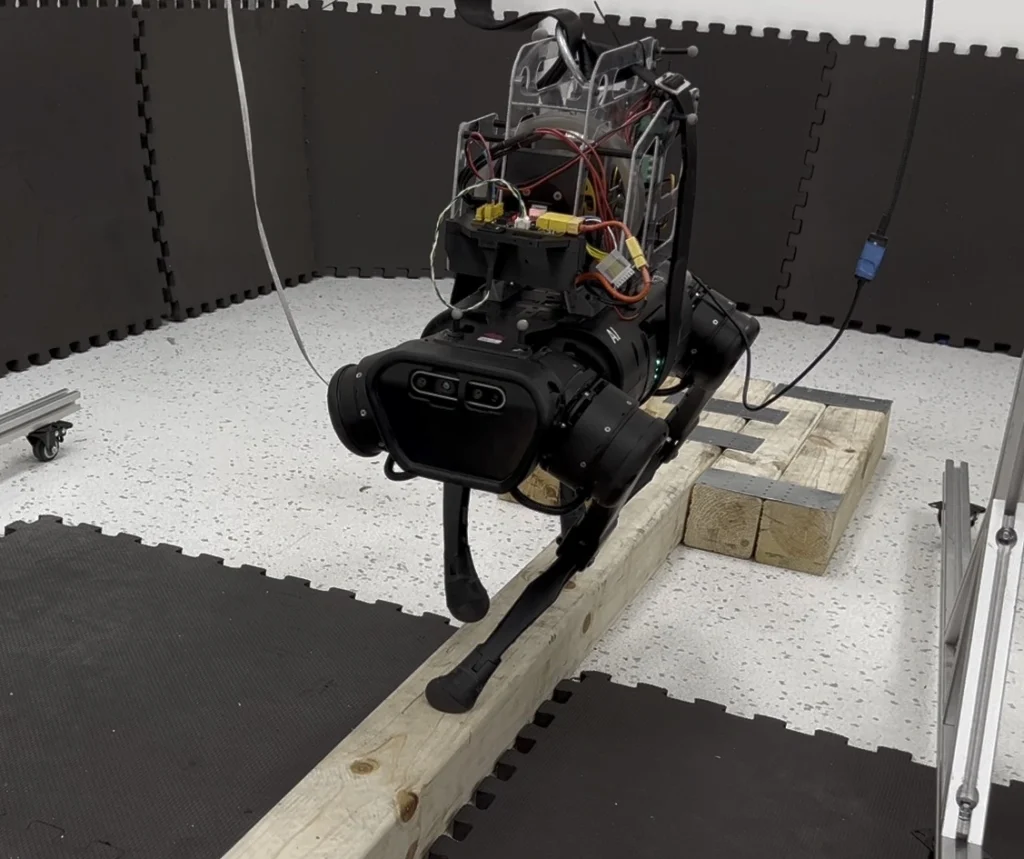Wednesday, 26 April 2023, Bengaluru, India
As cool as it sounds, the efforts to build this dog were huge. Using high-end satellite technology, the robotics lab of Carnegie Mellon University’s Robotics Institute figured out a way to make a one-of-a-kind robot that can walk on a balance beam without any difficulty. There have always been humanoid robots in the world, but the issue stands with their form factor.

The built is close to one human, but that is not enough, and it is not like humans have unsatisfactory bodies. Humans have a consciousness that keeps them aware of their surroundings, but humanoid robots don’t have such consciousness, and that always keeps them one step away from humans.
Constant efforts have been put forward to establish similarities between a human and a humanoid at extreme levels. We have seen humanoids operating in restaurants serving food, working as a navigator at airports, and many other uses.
But, people think it is not their limit and that these humanoids can do much more. To extend the possibilities, creating balance in humanoids is a crucial factor, according to the scientists at Carnegie Mellon University’s Robotics Institute. The solution these scientists went for was a humanoid with four legs and a low center of gravity.
With the four legs, there is enough stability in the machine, but there is always a motive to do more. The idea was to make the robot walk on a balance beam. Unsurprisingly enough, that was a disaster as the robot wasn’t calibrated to work that way. However, the University scientists took this as a challenge and worked to get the robot to walk on a balance beam.
The team of scientists finally reached a solution to make the robot walk on a balance beam. The solution was to install a backpack-kind of the box on the top of the robot. This box is a reaction wheel actuator (RWA), which is something used to control the altitude of satellites.
“This experiment was huge,” says assistant professor Zachary Manchester. “I don’t think anyone has ever successfully done balance beam walking with a robot before.”
“You basically have a big flywheel with a motor attached,” adds Manchester. “If you spin the heavy flywheel one way, it makes the satellite spin the other way. Now take that and put it on the body of a quadruped robot.”
Such innovations always have a reason behind them. One can always argue the reason why a robotic dog with the ability to walk on a balance beam is needed, but a clear answer to that would be to help in search and rescue missions. We all know AI-powered robots can be helpful in lots of ways to humans, and receiving such help during a search and rescue mission only helps the mission. These robots can operate in places where it would be difficult for humans to go or would take much time, and operating quickly and efficiently will favour the search and rescue mission.
Sources – Tech Crunch
As a highly skilled and experienced content writer, I have a passion for creating engaging and informative content that connects with audiences and inspires them to take action. With over 1 year of experience in the industry, I have honed my writing skills to craft content that is both effective and SEO-friendly.
